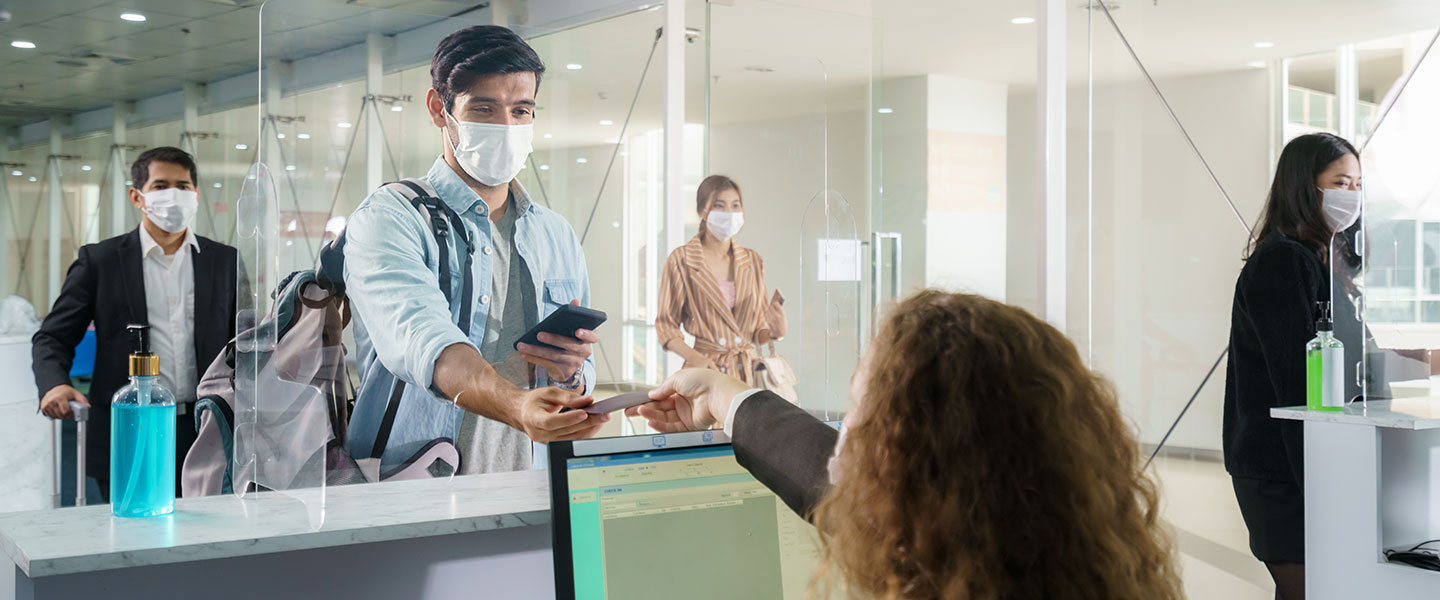-
Financial reporting and accounting advisory services
You trust your external auditor to deliver not only a high-quality, independent audit of your financial statements but to provide a range of support, including assessing material risks, evaluating internal controls and raising awareness around new and amended accounting standards.
-
Accounting Standards for Private Enterprises
Get the clear financial picture you need with the accounting standards team at Grant Thornton LLP. Our experts have extensive experience with private enterprises of all sizes in all industries, an in-depth knowledge of today’s accounting standards, and are directly involved in the standard-setting process.
-
International Financial Reporting Standards
Whether you are already using IFRS or considering a transition to this global framework, Grant Thornton LLP’s accounting standards team is here to help.
-
Accounting Standards for Not-for-Profit Organizations
From small, community organizations to large, national charities, you can count on Grant Thornton LLP’s accounting standards team for in-depth knowledge and trusted advice.
-
Public Sector Accounting Standards
Working for a public-sector organization comes with a unique set of requirements for accounting and financial reporting. Grant Thornton LLP’s accounting standards team has the practical, public-sector experience and in-depth knowledge you need.
-
Tax planning and compliance
Whether you are a private or public organization, your goal is to manage the critical aspects of tax compliance, and achieve the most effective results. At Grant Thornton, we focus on delivering relevant advice, and providing an integrated planning approach to help you fulfill compliance obligations.
-
Research and development and government incentives
Are you developing innovative processes or products, undertaking experimentation or solving technological problems? If so, you may qualify to claim SR&ED tax credits. This Canadian federal government initiative is designed to encourage and support innovation in Canada. Our R&D professionals are a highly-trained, diverse team of practitioners that are engineers, scientists and specialized accountants.
-
Indirect tax
Keeping track of changes and developments in GST/HST, Quebec sales tax and other provincial sales taxes across Canada, can be a full-time job. The consequences for failing to adequately manage your organization’s sales tax obligations can be significant - from assessments, to forgone recoveries and cash flow implications, to customer or reputational risk.
-
US corporate tax
The United States has a very complex and regulated tax environment, that may undergo significant changes. Cross-border tax issues could become even more challenging for Canadian businesses looking for growth and prosperity in the biggest economy in the world.
-
Cross-border personal tax
In an increasingly flexible world, moving across the border may be more viable for Canadians and Americans; however, relocating may also have complex tax implications.
-
International tax
While there is great opportunity for businesses looking to expand globally, organizations are under increasing tax scrutiny. Regardless of your company’s size and level of international involvement—whether you’re working abroad, investing, buying and selling, borrowing or manufacturing—doing business beyond Canada’s borders comes with its fair share of tax risks.
-
Transfer pricing
Transfer pricing is a complex area of corporate taxation that is concerned with the intra-group pricing of goods, services, intangibles, and financial instruments. Transfer pricing has become a critical governance issue for companies, tax authorities and policy makers, and represents a principal risk area for multinationals.
-
Succession & estate planning
Like many private business owners today, you’ve spent your career building and running your business successfully. Now you’re faced with deciding on a successor—a successor who may or may not want your direct involvement and share your vision.
-
Tax Reporting & Advisory
The financial and tax reporting obligations of public markets and global tax authorities take significant resources and investment to manage. This requires calculating global tax provision estimates under US GAAP, IFRS, and other frameworks, and reconciling this reporting with tax compliance obligations.

-
Transactions
Our transactions group takes a client-centric, integrated approach, focused on helping you make and implement the best financial strategies. We offer meaningful, actionable and holistic advice to allow you to create value, manage risks and seize opportunities. It’s what we do best: help great organizations like yours grow and thrive.
-
Restructuring
We bring a wide range of services to both individuals and businesses – including shareholders, executives, directors, lenders, creditors and other advisors who are dealing with a corporation experiencing financial challenges.
-
Forensics
Market-driven expertise in investigation, dispute resolution and digital forensics
-
Consulting
Running a business is challenging and you need advice you can rely on at anytime you need it. Our team dives deep into your issues, looking holistically at your organization to understand your people, processes, and systems needs at the root of your pain points. The intersection of these three things is critical to develop the solutions you need today.
-
Creditor updates
Updates for creditors, limited partners, investors and shareholders.

-
Governance, risk and compliance
Effective, risk management—including governance and regulatory compliance—can lead to tangible, long-term business improvements. And be a source of significant competitive advantage.
-
Internal audit
Organizations thrive when they are constantly innovating, improving or creating new services and products and envisioning new markets and growth opportunities.
-
Certification – SOX
The corporate governance landscape is challenging at the best of times for public companies and their subsidiaries in Canada, the United States and around the world.
-
Third party assurance
Naturally, clients and stakeholders want reassurance that there are appropriate controls and safeguards over the data and processes being used to service their business. It’s critical.
-
 ASPE Sec. 3041 Agriculture Understanding and applying the new ASPE Section 3041 AgricultureThe Canadian Accounting Standards Board (AcSB) has released new guidance on recognizing, measuring and disclosing biological assets and the harvested products of bio assets.
ASPE Sec. 3041 Agriculture Understanding and applying the new ASPE Section 3041 AgricultureThe Canadian Accounting Standards Board (AcSB) has released new guidance on recognizing, measuring and disclosing biological assets and the harvested products of bio assets. -
 Tax alert Agricultural Clean Technology ProgramThe Agricultural Clean Technology Program will provide financial assistance to farmers and agri-businesses to help them reduce greenhouse gas (GHG) emissions.
Tax alert Agricultural Clean Technology ProgramThe Agricultural Clean Technology Program will provide financial assistance to farmers and agri-businesses to help them reduce greenhouse gas (GHG) emissions. -
 Tax alert ACT Program – Research and Innovation Stream explainedThe ACT Research and Innovation Stream provides financial support to organizations engaged in pre-market innovation.
Tax alert ACT Program – Research and Innovation Stream explainedThe ACT Research and Innovation Stream provides financial support to organizations engaged in pre-market innovation. -
 Tax alert ACT Program – Adoption Stream explainedThe ACT Adoption Stream provides non-repayable funding to help farmers and agri-business with the purchase and installation of clean technologies.
Tax alert ACT Program – Adoption Stream explainedThe ACT Adoption Stream provides non-repayable funding to help farmers and agri-business with the purchase and installation of clean technologies.
-
Builders And Developers
Every real estate project starts with a vision. We help builders and developers solidify that vision, transform it into reality, and create value.
-
Rental Property Owners And Occupiers
In today’s economic climate, it’s more important than ever to have a strong advisory partner on your side.
-
Real Estate Service Providers
Your company plays a key role in the success of landlords, investors and owners, but who is doing the same for you?

-
Mining
There’s no business quite like mining. It’s volatile, risky and complex – but the potential pay-off is huge. You’re not afraid of a challenge: the key is finding the right balance between risk and reward. Whether you’re a junior prospector, a senior producer, or somewhere in between, we’ll work with you to explore, discover and extract value at every stage of the mining process.
-
Oil & gas
The oil and gas industry is facing many complex challenges, beyond the price of oil. These include environmental issues, access to markets, growing competition from alternative energy sources and international markets, and a rapidly changing regulatory landscape, to name but a few.

Updated December 22, 2021
With the continuing spread of COVID-19’s Omicron variant, the federal government announced its intention to make changes to the Local Lockdown Benefit and the Canada Worker Lockdown Benefit to make them easier to access. The changes, applicable for the two periods from December 19, 2021 to February 12, 2022, are outlined below.
Bill C-2, which includes the measures outlined below, received Royal Assent on December 17, 2021. The bill was revised to add a rule which limits the ability of a public company or its subsidiary to claim a wage or rent subsidy when either pays a taxable dividend to an individual on the common shares of the public company or its subsidiary.
New programs and changes to existing programs
Many personal and business support programs, including the Canada Emergency Wage Subsidy (CEWS) and the Canada Emergency Rent Subsidy (CERS), expired on October 23, 2021. To continue to support Canadians during the COVID-19 pandemic, the federal government proposed new support measures, as well as changes to some existing support measures. The new business support programs will provide wage and rent subsidies (similar to the CEWS/CERS) but only to targeted businesses that meet the requirements under each program.
Business measures
The government has proposed the following three new programs to continue providing wage and rent subsidies to businesses that have been severely impacted by the pandemic:
- Tourism and Hospitality Recovery Program (THRP)
- Hardest-Hit Business Recovery Program (HHBRP)
- Support during Public Health Lockdown
Tourism and Hospitality Recovery Program (THRP)
Time period
October 24, 2021 - May 7, 2022
Eligible entities
Qualifying tourism and hospitality entities including, but not limited to:
- Tourism: tour operators, travel agencies, museums, zoos, natural parks, theme parks, sightseeing or dinner cruises, charter fishing services, charter bus services, airport operators, etc.
- Hospitality: hotels, bed and breakfasts, restaurants, food trucks, nightclubs, bars, casinos, etc.
- Other: trade show organizers, fitness and recreational sports centers, overnight recreational camps, theatres, etc.
A complete list of the types of business activities eligible for THRP can be found on the government’s webpage.
Eligibility thresholds
To qualify, a “two-key” eligibility system must be met:
1. a current-month revenue decline of at least 40% (see our CEWS page for current-month revenue decline calculation)
2. a prior year revenue decline of at least 40%, which is the average monthly revenue decline over the first 13 CEWS qualifying periods (excluding period 10 or 11 and any qualifying period in which the entity was not carrying on its ordinary operations for reasons other than a public health restriction)
Wage and rent subsidy rates*
| Current-month revenue decline | Periods 22-26 Oct 24,2021 – Mar 12,2022 |
Periods 27-28 March 13 – May 7,2022 |
| 75% and over | 75% | 37.5% |
| 40-74% | %revenue decline | %revenue decline / 2 |
| 0-39% | 0% | 0% |
*Adapted from the federal government's website
Hardest-Hit Business Recovery Program (HHBRP)
Time period
October 24, 2021 - May 7, 2022
Eligible entities
This is not sector specific and includes entities with deep losses that do not qualify for THRP and are not subject to a public health lockdown restriction.
Eligibility thresholds
To qualify, a “two-key” eligibility system must be met:
1. a current-month revenue decline of at least 50%
2. a prior year revenue decline of at least 50% (calculated under the same method as described above for THRP)
Wage and rent subsidy rates*
| Current-month revenue decline | Periods 22-26 Oct 24,2021 – Mar 12,2022 |
Periods 27-28 March 13 – May 7,2022 |
| 75% and over | 50% | 25% |
| 50-74% | 10% + (%revenue decline minus 50%) x 1.6 | 5% + (%revenue decline minus 50%) x 0.8 |
| 0-49% | 0% | 0% |
*Adapted from the federal government’s website
Support During Public Health Lockdown
The government will also provide both wage and rent subsidies to any business that’s forced to shut down one or more of their locations due to a public health restriction for at least seven days in a qualifying period. This measure will also be in place between October 24, 2021 - May 7, 2022.
Unlike the previous two measures, an eligible entity must demonstrate only a current-month revenue decline of at least 40% (e.g. no prior year revenue decline is required). Furthermore, an eligible entity must have at least 25% of its qualifying revenue in the prior reference period derived from the activities that were restricted due to the lockdown. Eligible entities who qualify under these rules can receive a wage and/or rent subsidy of up to 75% in periods 22 to 26 and up to 37.5% for periods 27 and 28, as calculated under the THRP rules noted above.
December 22 update:
For claim periods 24 and 25 (from December 19, 2021 to February 12, 2022) businesses can qualify for the Local Lockdown Program if they face capacity restrictions of 50% or more due to a public health restriction and the business’s restricted activities provided at least 50% of the qualifying revenue during the prior reference period.
The current-month revenue decline threshold is also decreased to 25% instead of 40%.
Under the proposed changes, the rate structure for the Local Lockdown Support for these two periods would be as follows:
| Current-month revenue decline |
Periods 24-25 |
| 75% and over | 75% |
| 25-74% | %revenue decline |
| 0-24% | 0% |
Rent Subsidy and Lockdown Support
Beginning October 24, 2021, the aggregate monthly rent subsidy cap (including any amounts claimed by affiliated entities) is increased from $300,000 to $1M. The Lockdown Support, which is a top-up rent subsidy equal to 25% of the qualifying rent expense, will continue to be available to an eligible entity provided it qualifies under the THRP or the HHBRP and faces a public health restriction. It is pro-rated based on the number of days in the qualifying period a particular location was affected by a lockdown. See our CERS page for more details on the Lockdown Support.
Canada Recovery Hiring Program (CRHP)
The government has proposed the extension of the CRHP to May 7, 2022, with the option to further extend to July 2, 2022. The proposals also include increasing the subsidy rate to 50% from 20% for period 22 (October 24, 2021 - November 20, 2021). Under the proposed rules, the existing eligibility rules and the existing baseline period of March 14, 2021 - April 10, 2021 will continue to apply during the extension.
Personal measures
Canada Worker Lockdown Benefit (CWLB)
The CWLB replaces the Canada Recovery Benefit (CRB), providing a benefit of $300/week to individuals whose work is interrupted due to a government-imposed lockdown for at least 14 consecutive days. This measure will be available until May 7, 2022, with retroactive effect to October 24, 2021. This benefit is available to workers who are both ineligible or eligible for EI, as long as they did not receive EI benefits, the Canada Recovery Caregiving Benefit (CRCB) or the Canada Recovery Sickness Benefit (CRSB) for the same period. However, individuals who lose income or employment because they don’t meet their employer’s vaccination requirements will not be able to access this benefit. An individual must file their 2021 income tax return by December 31, 2022 to be eligible for the CWLB for 2021 and must file both their 2021 and 2022 income tax returns by December 31, 2023 to be eligible for the CWLB for 2022.
December 22 update:
For claim periods 24 and 25 (from December 19, 2021 to February 12, 2022) individuals can qualify for the CWLB if they are unable to work due to capacity restrictions of 50% or more, as required under a public health order. Furthermore, for these two claim periods, the restrictions must be in place for 7 consecutive days rather than 14 consecutive days, as originally announced.
Canada Recovery Caregiving Benefit
The government has proposed to extend the CRCB until May 7, 2022 and increase the maximum duration to 44 weeks from 42 weeks.
Canada Recovery Sickness Benefit
The government has proposed to extend the CRSB until May 7, 2022 and increase the maximum duration to 6 weeks from 4 weeks.
Additional information
The new pandemic aid bill is in the proposal stage. We’ll provide updates if and when the bill is passed and becomes law. Please contact a Grant Thornton tax advisor if you have any questions about the new programs.
Insights
Subscribe to receive relevant and timely insights and event invitations.



